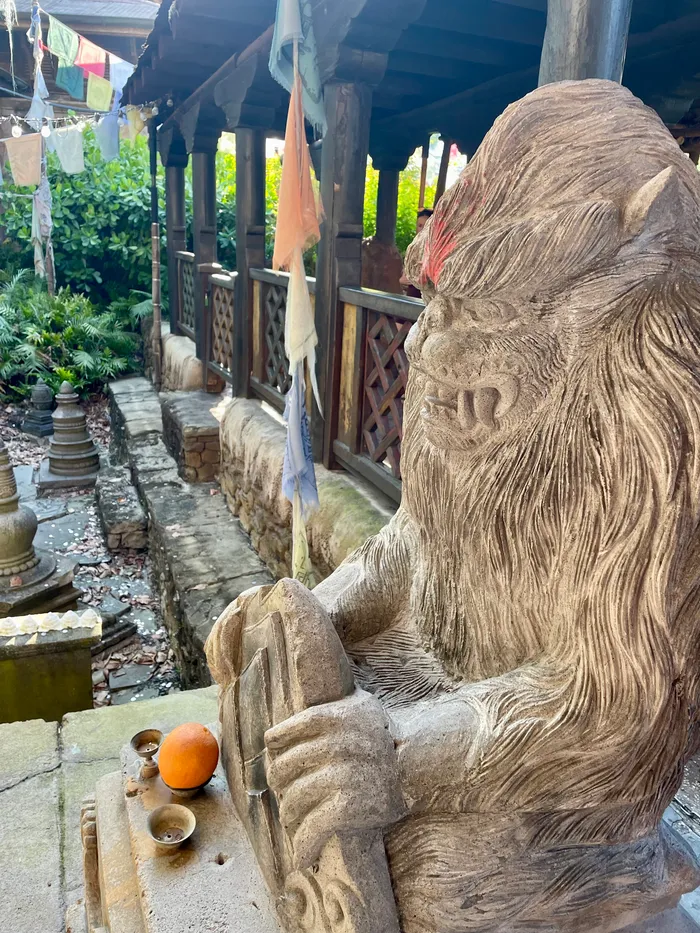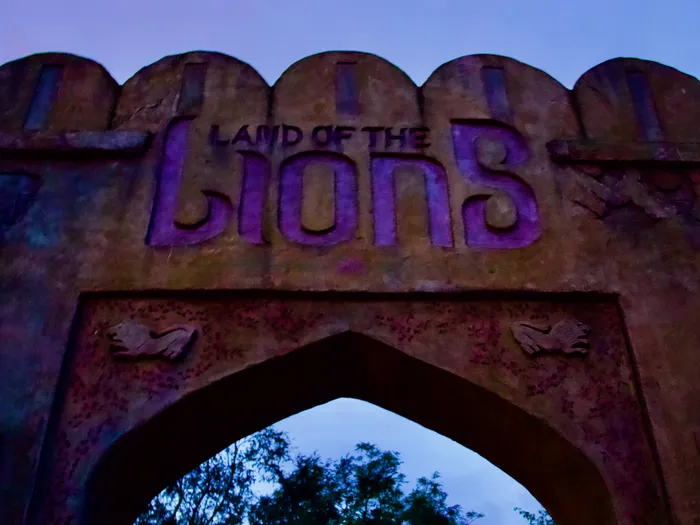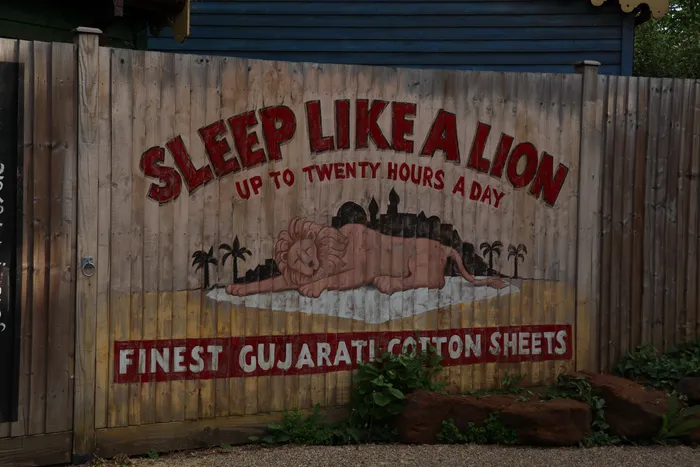Introduction
Well executed design doesn’t just look nice, it influences the way people think. My favourite example of this is Disney’s Animal Kingdom Theme Park.
Opened in 1998 at Florida’s Walt Disney World, Disney’s Animal Kingdom is a 580 acre park, themed around the natural world and dedicated to animal conservation.
The level of detail and themed immersion is unparalleled I believe. I’ll talk about why I think this makes Animal Kingdom incredibly effective at informing and educating guests in matters of animal protection and conservation.

The Power Of Thematic Design & Storytelling
Not Just Animal Exhibits
Animal Kingdom is divided into six distinct lands: Oasis, Discovery Island, Pandora – The World of Avatar, Africa, Asia, and finally my beloved DinoLand U.S.A. which is soon to be replaced with Tropical Americas.
Each land has distinct themeing and focus, and the animals are housed in the area of the park analogous to the location that they live in the wild. This does two things for the guest, it helps park navigation, but also invites the guest to believe that they are in those locations, viewing the animals in their natural habitats. This is achieved via some clever habitat design, but also incredibly detailed and immersive theming.
A good example of this is Harambe Village, in the Africa themed land, which is designed to feel like a real African town, bustling with life.

Quick service food stalls are themed as market stalls, as part of the Harambe Market making guests feel like they’re buying local produce. They’re not, they’re in possibly one of the most commercialised and perhaps artificial environemnets on earth, but that doesn’t matter as, for a second, in that moment, they’re bartering with a market stall holder in Africa for their lunch.
The effect this has on the guest, is that they feel like they understand the environment a little better than they did when they arrived. It’s not just about seeing the animals—it’s about feeling a connection to the culture, the landscape, and the rhythms of daily life in that part of the world. This sense of immersion makes conservation feel personal, when guests emotionally invest in a place, they’re more likely to care about preserving it.
By creating an environment that feels authentic, even within the bounds of a theme park, Animal Kingdom turns passive observers into engaged participants, subtly reinforcing the idea that these animals and their habitats are worth protecting in the real world.
As a Theme Park, of course there are rides. Expedition Everest is a thrilling rollercoaster expedition to find a Yeti, Dinosaur is a dark ride through time to collect a dinosaur specimen before a mass extinction event. Also there are shows which educate to varying degrees It’s Tough To Be A Bug (was) a story of the life of insects, Feathered Friends In Flight provides a look at the birds of Animal Kingdom and how they’re looked after.
Peek Behind The Scenes
Accompanying the headline attractions you also have Conservation Station which offers an incredible look at the veterinary treatment that goes on, you can view animal examinations happening in front of your eyes. Watch as cast members prepare meals for animals in the Nutrition Center and more. This is a excellent way to demonstrate the care that’s taken by Disney and also foster a sense of responsibility in guests that watch.
It’s All In The Details
How do you begin to create an authentic environment? Surrounding a guest with a convincing, detailed and immersive environment is the first step to transporting them thousands of miles away.
This level of immersion also applies to the animal exhibits. For example, habitats are themed to the land they are situated in, and some animals are housed in enclosures which give the illusion to the guest of being barrierless, specifically those found on Kilamanjaro Safaris - a safari ride through an endless savannah.
The photo gallery below has some of my favourite examples of the details that can be found across the park.
Image Carousel

Details everywhere you look: Dinosaur Treasures in DinoLand USA was covered in dinosaur trinkets and other themed items.
Inspiring Action Through Emotive Design
If complete guest immersion is Disney’s design goal, I don’t think they’ve achieved it anywhere else so completely as they have in Animal Kingdom. Great design doesn’t just inform, it makes people feel. At Disney’s Animal Kingdom, every detail is carefully crafted to evoke an emotional connection, ensuring that conservation isn’t just understood but deeply felt. I’ve picked out a couple of things I’ve noticed to focus on.
Considered Use of Signage
The aim, I think, is to elicit a positive response to signage. It must serve it’s purpose, to provide information, but there’s so much room to create joy while achieveing this initial aim.
The first image in the gallery below is a themed sign for the restroom in Africa, themed for that area not just in colour or font, but in copy too. It’s a memorable sign for a park guest, and it’s for the toilet!
Image Carousel

Themed restroom signage: Restroom signage in the African themed land.
The second and third images are from DinoLand USA, and offer very clear examples of how theming your signage to the context it will appear in can help to keep guests immersed, whilst still ensuring that they are supplied with the information they need. There are many examples of this across the park, each land has specific signage, worldbuilding and story.
The positive experiences here are likely to be felt long after the guest has left the park, joy is powerful, and a positive memory of one aspect of Animal Kingdom can prompt memories of animals and other experiences from that time.
Creating Attachment Through Music
What particularly caught my attention on my last visit was the way music plays such a large role in creating that sense of comfort, and attachment to an area. Because the association between the music playing in the land and the themeing and design was so strong, they almost became a single entity in my mind. If I heard the music I thought of the designs and visual style of that land, and vice versa.
This seamless integration of sound and visuals strengthens the emotional bond guests form with each space, making their experience more immersive and their connection to the environment more lasting.
Emotional Connection Through Animal Encounters
Disney took great care in designing the park with naturalistic animal habitats and enclosures which closely align with what the animals would experience in the wild.
Disney creates spaces where animals can exhibit natural behaviors while guests observe them in a way that feels organic and immersive. Instead of traditional enclosures with visible barriers, moats, foliage, and carefully placed vantage points create the illusion of open landscapes, making the experience more engaging. At Gorilla Falls Exploration Trail for example, visitors watch gorillas interact within a lush environment, reinforcing the idea that they are stepping into the animals’ world rather than simply viewing them.
These design choices foster a deeper emotional connection, encouraging guests to see these creatures as individuals with complex lives rather than just exhibits, ultimately inspiring greater respect and a desire to protect wildlife.
Managing Environmental Impact
The reality is that there are lot of environmental overheads which occur running a tourist destination such as a theme park, Disney is very transparent in how it looks after it’s animals, has prominent partners in the naturalist world (Dr Jane Goodall was a consultant on the Gorilla habitat for instance).
As of 2023 The Disney Conservation Fund has directed over $125 million to projects that support communities to protect wildlife and their habitats in 126 countries. Animal Kingom is the only location of the four Walt Disney World Parks in which you cannot purchase or enter holding balloons, no firework shows are performed, and the park closes earlier than the others to keep the evening and night environments as quiet as possible for the Animals.
These efforts demonstrate that even a large-scale theme park can balance entertainment with environmental responsibility, setting a standard for how tourism and conservation can coexist.
UX Lessons From Animal Kingdom
Deep Engagement Through Storytelling
Animal Kingdom proves that storytelling isn’t just for entertainment, it’s a powerful tool for engagement. By embedding narratives into every aspect of the park, from architecture to attractions, Disney transforms passive observation into an interactive experience that leaves a lasting impression.
Designing For Emotional Impact
This emotional connection affects how people think and feel. Animal Kingdom’s immersive environments, carefully crafted habitats, and thoughtful use of music and theming demonstrate how design can inspire empathy, curiosity, and a deeper appreciation for the natural world.s
Taking Inspiration: London Zoo
As a sort of side note, a recent visit to London Zoo showed that you don’t have to be Disney to employ some of these practices. We stayed overnight near the Lion habitat, and they have paid a very similar level of attention to this area, and it has much the same effect on guests in my opinion.
Image Carousel

Peaceful forest oasis: This themed signage at London Zoo shows choices in language, fonts and colours which add to the user experience.










